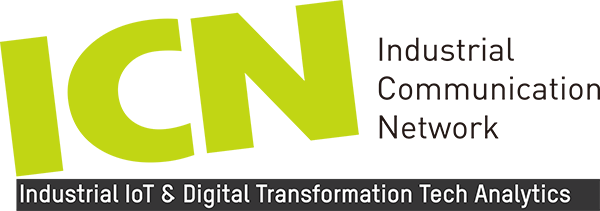Until now, the development of standards guiding gas fuel transfer operations in ports has lagged behind, as the maritime industry focussed on developing standards for gas fuelled ships rather than bunkering arrangements. This notation addresses safety concerns in this field and covers gas bunker vessels design and additional requirements to support the development of gas fuelled shipping and bunker operations in ports. The rules are flexible and include a variety of gas fuels as well as the configuration of bunker transfer systems.
Many port authorities still deem ship-to-ship bunker operations as being too risky and oppose efforts to increase the availability of gas fuels in ports. “Complying with DNV GL’s new class notation increases the acceptance of safe gas fuel bunkering operations by ports and local authorities and puts bunker ship owners in a stronger position in the market,” explains Yury Ilchenko, Principal Engineer at DNV GL.
In places with limited infrastructure and with demands for short turn-over times in ports, flexible ship-to-ship bunkering transfer operation is an efficient solution. DNV GL’s new class notation outlines requirements for liquefied gas carriers and barges that are equipped for carrying liquefied gas and supplying it to gas fuelled ships on a regular basis. “The class notation covers safety issues on the gas bunker vessel, its gas bunker related equipment and installations on board. It outlines requirements for design, construction and operational procedures with regard to connection and disconnection of transfer arrangements, bunker transfer and vapour return,” explains Ilchenko.
Tougher limits on the sulphur content of marine fuels (0.1 per cent) in Emissions Control Areas (ECAs), which entered into force in January 2015, have increased the demand for port infrastructure dedicated to bunkering alternative fuels such as liquefied natural gas (LNG). From 2020 onwards, vessels sailing in all European waters will need to comply with a 0.5 per cent sulphur cap. In addition, the International Maritime Organization’s global sulphur limit of 0.5 per cent is expected to come into force in 2020 or 2025, depending on the outcome of a review as to the availability of the required fuel oil.
DNV GL has also developed a GAS READY notation for owners looking to prepare their vessel for a potential conversion to LNG operation at the newbuilding stage. The notation helps owners ensure that their vessels are verifiably in compliance with all safety and operational requirements to meet the applicable global as well as class standards for gas fuelled operations. It also supports owners in specifying and quantifying the level of investment they need to make.
The class notation can be downloaded on our website http://exchange.dnv.com/servicedocuments/dnv, Rules for Classification/Part 6/ Ch 37.
2024년 4월 18일
Latest
스마트기계
[포커스] 에이디링크, 까다로운 산업 환경을 위해 설계된 IP69K 스테인리스 스틸 산업용 패널 PC
에이디링크는 까다로운 산업 환경을 위해 특별히 제작된 IP69K 스테인리스 스틸 산업용 패널 PC인 Titan2시리즈를 출시한다
성공사례
인텔, 세계 최대 뉴로모픽 시스템 ‘할라 포인트(Hala Point)’ 발표
할라 포인트는 과학 및 엔지니어링 문제 해결, 물류, 스마트 시티 인프라 관리, LLM 및 AI 에이전트와 같은 AI 애플리케이션 위한 실시간 연속 학습을 제공한다
신제품
인피니언, 머신러닝 애플리케이션용 PSoC™ Edge 마이크로컨트롤러 발표
인피니언의 PSoC™ Edge E8 시리즈는 메인 프로세서로 Helium™ DSP를 지원하는 고성능 Arm Cortex®-M55을 채택하고 에지의 머신러닝을 지원한다
스마트자동차
티티테크 오토, SDV 대응 차세대 스케줄러 ‘MotionWise Schedule’ 출시
티티테크 오토의 ‘모션와이즈 스케줄'은 정확한 초기 설계 접근 방식으로 설계-테스트-검증 단계에서 소요되는 소프트웨어 개발 시간을 획기적으로 단축할 수 있다
신제품
콩가텍, conga-SA8 모듈로 미래형 산업용 에지 컴퓨팅과 가상화 위한 성능 제공
콩가텍(congatec)이 기존 대비 2배 이상의 에너지 효율로 미래형 산업용 에지 컴퓨팅과 강력한 가상화를 위한 새로운 수준의 성능을 제공하는 SMARC 모듈을 내놓았다
Popular
반도체 공정을 위한 SEMI 표준 프로토콜 SECS의 이해
생산현장에서 SECS 프로토콜을 이용한 장비와 호스트간의 통신이 가능해 지면서 장비는 제조공정 수행을 위해 호스트로부터 작업지시를 받거나 장비의 가동 상태나 공정조건 등의 파라메터 데이터를 호스트로 전송하여 분석 활용할 수 있도록 하는 등 생산자원의 중앙집중 관리가 가능해 졌다.
자율주행차와 스마트카를 위한 라이다(LiDAR) 기술
라이다 센서는 일반적으 로 높은 에너지 밀도와 짧은 주기를 가지는 펄스 신호를 생성할 수 있는 레이저의 장점을 활용하여 보다 정밀한 측정에 활용된다.
반도체 제조 장비 시장 현황과 전망
반도체 제조 장비는 스마트폰, 컴퓨터, 기타 첨단 제품을 비롯한 다양한 전자 제품에 사용되는 반도체 제조의 핵심 부품이다. 최근 반도체 장비 시장은 반도체 수요 증가와 보다 고도화되고 전문화된 장비를 필요로 하는 신기술 개발에 힘입어 크게 성장했다.
필드버스(Fieldbus)란 무엇인가?
지난 90년대부터 산업자동화의 근본이라 할 수 있는 통신분야에서 두각을 나타내고 있는 기술이 세계적으로 그 사용이 확산되고 있는데 바로 필드버스(Fieldbus)라고 불리우는 산업 통신 기술이다.
아이씨엔매거진
발행처: 아이씨엔 | 등록번호: 서울 서대문 라 00035 | 등록일: 2009. 4. 16 | 최초등록일: 2006. 6. 29 | 주소: 서울시 서대문구 신촌로 25, 2층 260호 (우03785)
[아이씨엔매거진은 2021년 7월 1일부터 디지털오피스 구축으로 디지털 환경에서 운영됩니다.]
발행/편집인: 오승모 | 개인정보보호책임자: 오승모 | 청소년보호책임자: 오윤경 | 기사제보 : news@icnweb.co.kr | 협업문의 : oseam@icnweb.co.kr
© 2006 - 2024 아이씨엔 미래기술센터. All Rights Reserved.
















